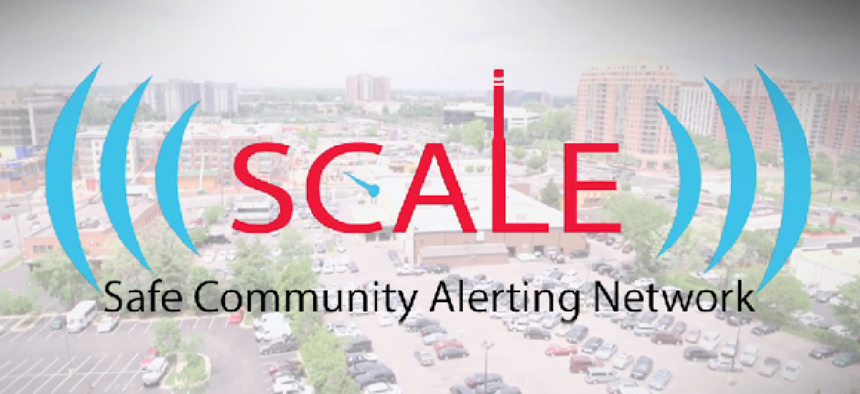SCALE brings Internet of Things to public housing

A SmartAmerica Challenge project to build an emergency alert system for public housing turned into a case study on how to develop a working Internet of Things application.
First of two parts. Read part two: Anatomy of an IoT public safety application
If the Safe Community Alert Network (SCALE) – a SmartAmerica Challenge project now up and running in Montgomery County, Md. – demonstrated one thing to its team members, it was that turning the Internet of Things into a reality is going to be a collaborative undertaking.
“We thought we were putting in an IBM proposal on some piece of infrastructure,” said John Cohn, IBM fellow and chief scientist for computer-aided design when he arrived at the SmartAmerica Challenge kickoff last year.
“Instead it turned into a kind of speed dating thing, where they put a whole bunch of smart people in a room, and they go around meeting each other to figure out what they’re going to go do.”
As Cohn started kicking around ideas with Dan Hoffman, chief innovation officer of Montgomery County, and others, they focused on the challenge of building a sensor system for public housing that could deliver alerts in the event of, say, smoke detectors being triggered or residents falling.
Building such a system, the group quickly realized, would require integrating a number of different technologies – sensors, data analytics, low-power network infrastructure and a dashboard. What’s more, the team realized that making the system open-ended so that developers could access the sensor data and create new applications was important. That meant making the data accessible on the Internet in a form that others could tap into.
“One of the challenges of the Internet of Things is the ability for innovation to happen from a variety of sectors and to be able to integrate that easily,” Cohn said. “So what we wanted to do with this data exchange is to make a central data hub that anyone can publish to, and to which anyone with permission can subscribe and possibly publish data back into the hub as well.”
Building SCALE
The SCALE team was made up of 10 public- and private-sector organizations. In addition to Montgomery County and IBM, other major participants included MIT, UC-Irvine, SigFox, Schneider Electric and World Sensing.
What the team ultimately put together was a system of prototype sensors designed to collect data on smoke, heat, light, carbon monoxide, humidity, power acoustics and motion. The sensors were deployed in a Rockville, Md., apartment building managed by the non-profit Montgomery Housing Partnership.
Within the building, sensor data is transmitted via either a mesh network or an ultra-narrow-band network to an IBM data hub. The data is analyzed and, if any anomalies are detected, an alert is sent according to predefined rules.
The application offers a few optional features designed to meet various requirements of the building residents. For instance SCALE can be set to contact the fire department, caretaker or building manger. Residents or their families can specify who should be contacted and by what medium.
“You can even initiate conference calls,” said Hoffman. “If the system detects there might be a problem with grandma, you can initiate a conference call between all of her kids and maybe an on-call nurse, saying, ‘Has anybody heard from grandma today?’”
According to Hoffman, if there is confirmation that there is a problem or if there is no response, a message is then sent to emergency dispatch.
The SCALE team is so enthused by SCALE I that they’re already making plans for SCALE II.
“The feedback has been really positive so far,” Hoffman said. “Within the county, among our public safety network, our firefighters – they’ve seen the opportunity and the potential.”
The next step, Hoffman said, is to add antennas. “Right now we have one ultra-narrow band antenna,” he said. “I’m hoping we can add a handful more so that we can really provide coverage across a wide swath of the county so than others can start accessing and experimenting on their own.”
In fact, Hoffman said the county is planning to hold a hackathon in the fall, inviting developers to build their own sensors and applications to connect to the service. “I like this being the county’s role – being the provider of that kind of connectivity,” Hoffman added.
Read part two: Anatomy of an IoT public safety application
NEXT STORY: Open Garden connects IoT devices on the fly





